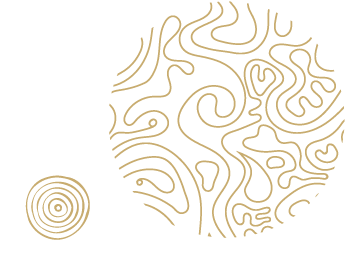"Whoever controls the narrative controls the world."
—Caitlin Johnstone
It is, in many ways, that both individuals and the world they perceive – the reality in which they live – are crafted by a narrative. A story. A story in which people are expected to be (and perhaps often are) characters playing the roles assigned.
There are many overlapping stories, all around the world, being told and retold at any given moment. Foundational narratives whispering to those in a particular time and place about what is possible in their individual lives, what they will think and believe, and how they can and should engage with the world around them. Narratives create reality. If the operative narrative in a given time and place tells a story of the divine right of kings, or that the only thinking animals are human beings, or that one gender needs another to reason for them, or that a certain group is “not us,” then that is the reality that people will not only accept but will see before them. Upon reflection, it is rather amazing how many different narratives humankind has accepted, recounted, and lived with over time.
Foundational narratives shape cultures and communities in the context of time and place. They can hold people together – my people – our ways – our beliefs – our reality. And that hold can be a disabling grip for some whose place in a given narrative is tightly bound – whether at the center or on the margins of the story. But foundational narratives also have a remarkable, frequently deadly, power to tear us apart. To create complex layers of “us” and “not us.” It is hard to even understand when, in the long history of our shifting formative narratives, “us” became such a very small notion and “not us” became so often a fearful one.
The people in the picture above have been looking silently out at me from a box of pictures for decades. They are cousins of my grandmother that I can’t recall ever meeting. Immigrating from one narrative to another likely, for them, meant believing that the world created by the U.S. was preferrable to the one they left behind. How did they learn a new U.S. narrative? How did it change reality? How did it shift “us” and “not us” for them – and how inclusive – how big – was that “us.” For them, as somewhat marginal residents in an adopted narrative that has shifted with time, I probably would be both part of their familial “us” and yet also very much “not us.”
Who controls our narrative? We do (or can) more or less – most of the time – but not always. Not so easily as individuals, perhaps, but as a collective set of narrators, we can shift and bend the world lines. Unfortunately, our alterations in this or that part of the narrative are often done inadvertently, and as we push a new idea into the story, we often forget how a single shift might ripple through the plot. We slowly change the story, bit by bit, fracturing our sense of the possible and the real but not in a fully rational way. We consider who can and should have position and power, yet we allow the narrative to tell us that position and power are a given – a part of reality. A reality defined by a slightly altered narrative.
Our narratives always seem to include too small of a head count in the “us” – never really an “all of us.” We assume that every narrative needs an “us” and a “not us,” even when we shift around who is in what category. Narratives blind as well as define. The one in which we reside does not allow us to easily understand just how insubstantial any story’s patterns or realities really are. It does encourage us to rewrite, however, and to remember how much the story could change in our collective hands.
And what happens if our collective hands and hearts do not hold on to the narrative? Well, that is not hard to see. How long did it take, and how few narrators had to contribute, for the “us” and the “not us” to shift the contemporary narrative in a way that remains a powerful blinding force? How easily can an assault on a resident narrative change the reality of those who are a part of it – what we see, how we see it, how reality changes, and what that manipulated narrative pushes a given “us” to do.
On some level, we know this (well, we do if we look at our track record over centuries – millennia), and yet how often and how easily we surrender our shared responsibility to draft the narrative ourselves.
While we have a good deal of evidence confirming that, even working together, we are flawed creators of a truly viable narrative – one that reveals more than it blinds – one that requires a lot more thinking and a lot less accepting – one that provokes more questions and offers fewer answers – it seems that we should, nonetheless, join across current lines of “us” and “not us” to preserve our collective control of the narrative. It is likely time we recognize how powerful a narrative is and, in turn, how dangerous to us all it can be.
Oh, and it might be nice if we made a sustained effort to create a narrative that had a very big “us” and maybe no “not us” at all. Not possible to make such a fundamental change in the narrative? Those with more damning intensions don’t seem to think so.
Once upon a time in 2022…
 
Joyce Feucht-Haviar
University Senior International Officer, CSUN
Dean, Tseng College, CSUN
|